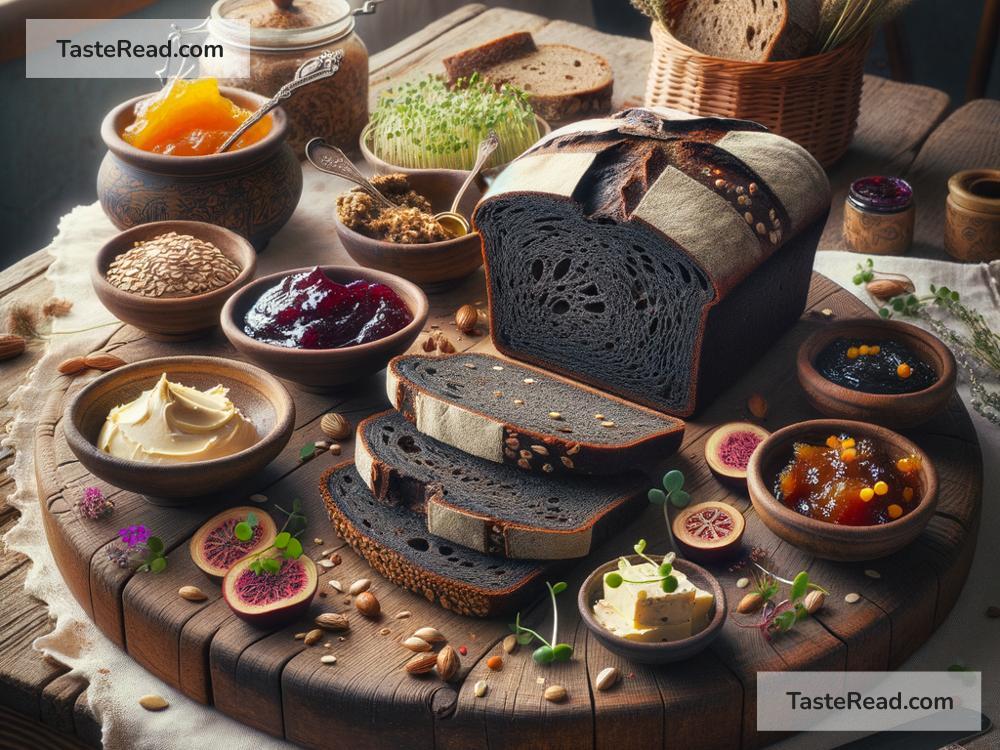Exploring Modern Vegan Versions of Estonian Black Bread
Estonian black bread, or “must leib,” is a cornerstone of Estonian cuisine that has been cherished for centuries. This dense, dark rye bread is a staple on Estonian tables, often paired with savory spreads, soups, or even eaten plain. Traditionally made with rye flour, sourdough starter, and minimal ingredients, Estonian black bread has a deep, earthy flavor and an unmistakable aroma. It is a symbol of home, comfort, and cultural identity for Estonians. But how does a timeless recipe like this fit into today’s growing vegan food movement? Let’s explore modern ways to make and enjoy vegan Estonian black bread.
What Makes Estonian Black Bread Special?
Estonian black bread stands out because it is made mostly with rye flour, which gives it its dark color and robust flavor. Unlike fluffy white bread, black bread is dense, hearty, and nourishing. It is also made using a sourdough fermentation process, which creates natural yeast to help the dough rise. Fermentation adds a slight tang to the bread while improving its shelf life.
The bread’s simplicity is another charm—it traditionally requires just four ingredients: rye flour, water, salt, and sourdough starter. No eggs, milk, or butter are used, making the original recipe naturally vegan-friendly. However, modern versions often incorporate honey, milk, or other additives for flavor, which are not vegan.
For vegans and those with plant-based diets, sticking to the original rye-based recipe or exploring creative alternatives can ensure the bread remains cruelty-free while staying true to its roots.
Veganizing Traditional Black Bread
If you’ve ever wondered how to make Estonian black bread at home, you’ll be happy to know that it is one of the easiest breads to incorporate into a vegan lifestyle. Here’s how to adapt traditional recipes and take them to the next level.
Using Plant-Based Sweeteners
Traditional recipes sometimes call for honey to balance the tangy sourdough flavor with a touch of sweetness. As a substitute, vegans can use maple syrup, agave nectar, or molasses. Molasses, in particular, pairs beautifully with rye bread because it has a rich, deep taste that complements the earthy rye flour. Adding just a tablespoon or two can transform your bread without compromising its authenticity.
Plant-Based Butter Alternatives
While butter may not be used in the bread dough itself, it is often served with a slice of black bread for added flavor. For a vegan-friendly option, try a spread made of vegan butter or mashed avocado. Many Estonians enjoy their bread with a savory topping, and vegan versions of traditional spreads (like hummus or dairy-free pesto) work wonderfully.
Experimenting with Flavors
Creative ingredients like seeds, nuts, and spices can add exciting textures and tastes to your black bread recipe. Flaxseeds or chia seeds provide a nutritional boost and bind the dough, while caraway seeds—commonly used in traditional rye bread—add a warm, aromatic flavor. Incorporating pumpkin seeds or sunflower seeds into the dough makes the bread heartier and adds crunch.
Modern Vegan Twists on Estonian Black Bread
While traditional Estonian black bread is beloved for its simplicity, modern recipes have taken it to new heights with plant-based innovations. Below are some fun twists to try at home:
Gluten-Free Vegan Black Bread
Modern diets sometimes call for alternatives to rye flour, especially for people who are sensitive to gluten. You can create a gluten-free version by using a blend of buckwheat flour, oat flour, and almond flour. While the texture will be different, it’s a great way to enjoy a bread similar to black bread without gluten.
Sourdough Starter Made Easy
Creating sourdough starter from scratch can feel intimidating for beginners, but it’s entirely plant-based and worth the effort. All you need is flour and water, along with some time to let it ferment. For an expedited process, some bakers add a teaspoon of apple cider vinegar to the starter, which kick-starts fermentation. By making your own starter, you can enjoy black bread that’s completely homemade and vegan.
Sweet and Savory Combinations
Many modern versions of black bread experiment with flavor pairings. Adding cranberries, raisins, or chopped nuts to the bread creates a slightly sweet loaf that works well for breakfast or snacks. For a savory twist, mix crushed garlic or fresh herbs like dill into the dough.
Serving Vegan Estonian Black Bread
Estonian black bread is incredibly versatile and pairs well with vegan dishes. Instead of traditional toppings like cheese, smoked fish, and butter, try pairing it with hummus, roasted red pepper spreads, or tahini. For soups, black bread is an ideal companion for hearty vegan stews like lentil soup or borscht. You can even use slices of black bread in vegan sandwiches along with roasted vegetables, tofu, or pickles.
Preserving Tradition While Embracing Change
Estonian black bread is much more than just a type of bread—it’s a symbol of resilience and simplicity rooted deep in Estonia’s history. Veganizing the bread doesn’t take away its traditional essence; instead, it makes it accessible to more people, including those who follow plant-based diets. By adapting and experimenting with the recipe, home bakers can preserve the tradition of black bread while embracing modern tastes and ethical values.
So if you’re looking to reconnect with an iconic Scandinavian staple and enjoy it in a vegan-friendly way, give Estonian black bread a try. Whether you keep it classic or add your own creative flair, this hearty, wholesome bread is sure to nourish both body and soul—plant-based style!


